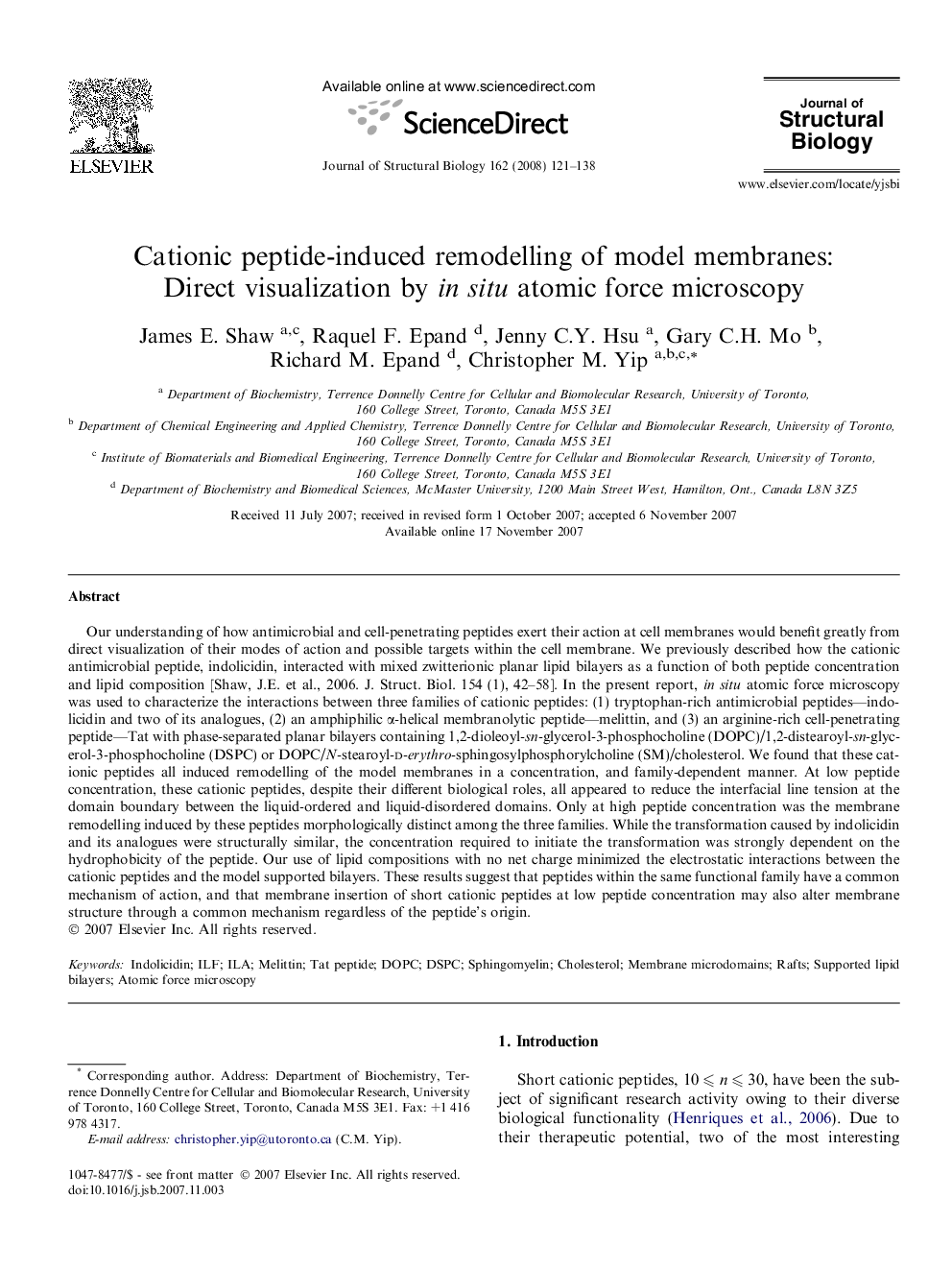| کد مقاله | کد نشریه | سال انتشار | مقاله انگلیسی | نسخه تمام متن |
|---|---|---|---|---|
| 2829257 | 1162797 | 2008 | 18 صفحه PDF | دانلود رایگان |

Our understanding of how antimicrobial and cell-penetrating peptides exert their action at cell membranes would benefit greatly from direct visualization of their modes of action and possible targets within the cell membrane. We previously described how the cationic antimicrobial peptide, indolicidin, interacted with mixed zwitterionic planar lipid bilayers as a function of both peptide concentration and lipid composition [Shaw, J.E. et al., 2006. J. Struct. Biol. 154 (1), 42–58]. In the present report, in situ atomic force microscopy was used to characterize the interactions between three families of cationic peptides: (1) tryptophan-rich antimicrobial peptides—indolicidin and two of its analogues, (2) an amphiphilic α-helical membranolytic peptide—melittin, and (3) an arginine-rich cell-penetrating peptide—Tat with phase-separated planar bilayers containing 1,2-dioleoyl-sn-glycerol-3-phosphocholine (DOPC)/1,2-distearoyl-sn-glycerol-3-phosphocholine (DSPC) or DOPC/N-stearoyl-d-erythro-sphingosylphosphorylcholine (SM)/cholesterol. We found that these cationic peptides all induced remodelling of the model membranes in a concentration, and family-dependent manner. At low peptide concentration, these cationic peptides, despite their different biological roles, all appeared to reduce the interfacial line tension at the domain boundary between the liquid-ordered and liquid-disordered domains. Only at high peptide concentration was the membrane remodelling induced by these peptides morphologically distinct among the three families. While the transformation caused by indolicidin and its analogues were structurally similar, the concentration required to initiate the transformation was strongly dependent on the hydrophobicity of the peptide. Our use of lipid compositions with no net charge minimized the electrostatic interactions between the cationic peptides and the model supported bilayers. These results suggest that peptides within the same functional family have a common mechanism of action, and that membrane insertion of short cationic peptides at low peptide concentration may also alter membrane structure through a common mechanism regardless of the peptide’s origin.
Journal: Journal of Structural Biology - Volume 162, Issue 1, April 2008, Pages 121–138